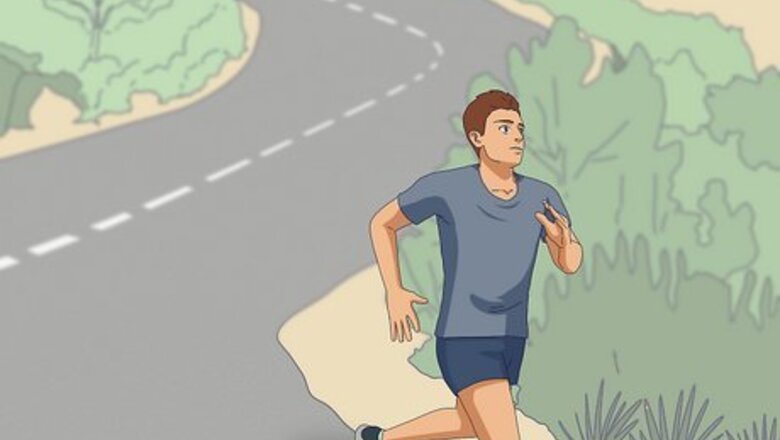
views
Building Speed
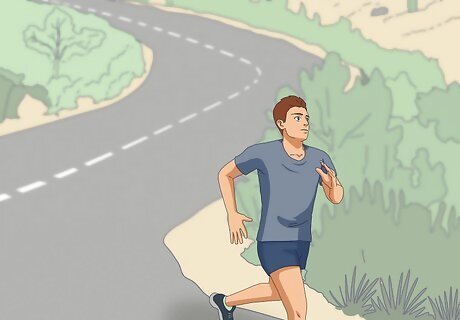
Do sprint drills to raise your maximum speed. Training to reach high speeds within relatively short distances can increase your top speed. Sprint drills are an easy way to accomplish this. Run at top speed for 22-33 yards (20-30 meters). Make sure that your arm action is smooth and relaxed during the exercise. Keep your arms close to your body. Focus on making smooth, even strides. Keep your head relaxed and in a natural position. Slow jog or walk back to your starting point when finished with the sprint. Do 2-4 repetitions of this drill.
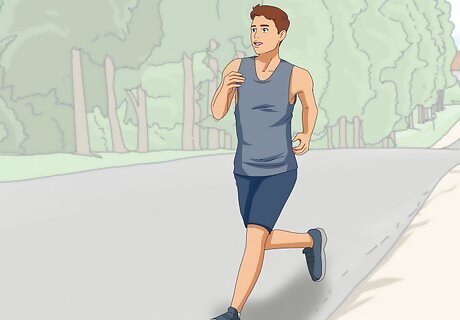
Do acceleration drills. The ability to accelerate quickly is critical in soccer, and often more important than a high maximum speed. Acceleration drills will make you build up to and come down from high speeds more efficiently. This type of exercise also helps you work high speeds into other routines. To do a simple acceleration drill: Jog for 7 yards (6.4 meters), then accelerate. Begin to decelerate around yard 12 (meter 11). Repeat the sequence, then walk back to your starting point.
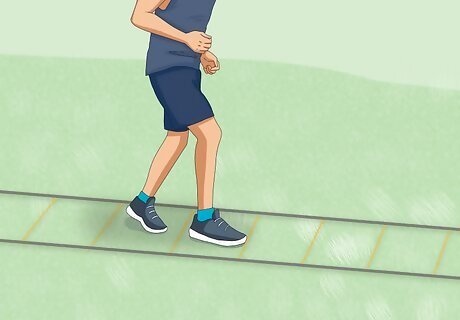
Use a speed ladder. Training with a speed ladder will increase your speed, lower body agility, balance, and coordination. This horizontal tool requires you to alternate your feet across successive rungs as you run. To improve your speed, train with the ladder while using a stopwatch, and work on improving your best time. Speed ladders are available at many athletic supply stores and online.
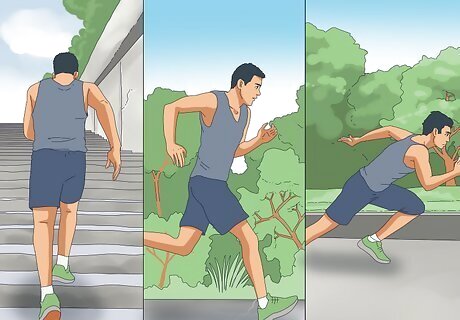
Try interval training. To use speed effectively on the field, you will have to get used to using bursts of speed interspersed within other movements. To accomplish this, do 30 minutes of interval training. Alternate light jogging (5-10 min) with short bursts of more powerful exercises, such as: Sprints Running stairs or hills Ladder drills Using a ball in combination with any of the above
Increasing Agility
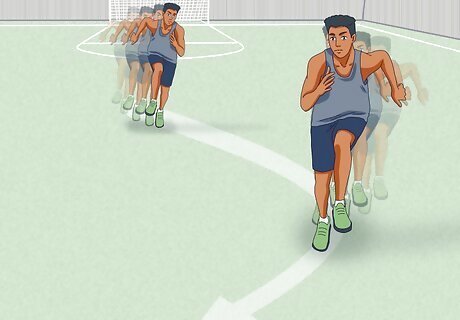
Train to improve reaction speed. Being fast on the field isn't just about running speed—it's also about your ability to change your direction, speed, or technique quickly and frequently. To improve your reaction speed, practice while a coach or friend calls (or better, uses a visual signal) for you to change your exercise. Respond as quickly as possible. Try incorporating a combination of exercises like: Changing direction quickly when running Sprinting on command Playing “Red Light Green Light”
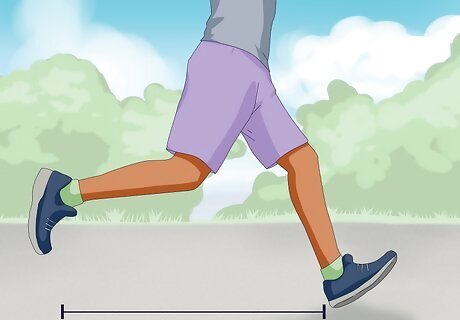
Extend your joints. To accelerate, you will have to extend and use your hip, knees, and ankles. When running or doing other exercises, focus on making long, even strides that stretch out. Increasing your stride length and muscle output in this way will boost your speed.
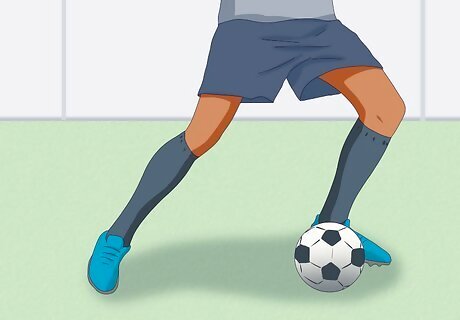
Practice ball exercises. While training to increase your speed at moving across the field, do not neglect your control of the ball. Remember that soccer is primarily a sport where the player's lower body moves in contact with the ground and ball. To be not only fast, but fast and in control of the ball, you must work on your agility. Dribble at every opportunity, using all parts of your foot (outside, inside, top, and bottom). Do speed dribbling exercises by kicking the ball slightly forward and running after it. Practice changing direction quickly while dribbling and doing speed dribbling exercises. You can also do this while attempting to evade another player in order to practice using quick dribbles as a way to beat opponents. Do lateral ball drop exercises. Have a coach or partner hold a ball at shoulder height, 5.4 yards (5 meters) away from you. When your coach/partner drops the ball, attempt to reach and control the ball before it bounces a second time. Practice cone or flag exercises to increase your speed and agility. Time yourself and aim to beat your time each round.
Setting up a Training Routine
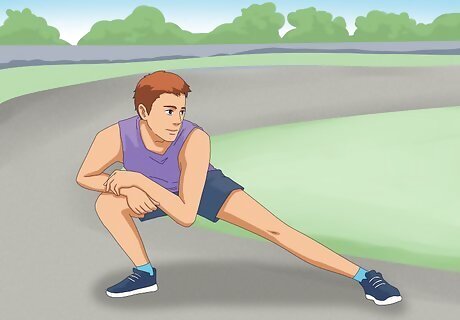
Warm up. Warm up by jogging or jumping rope before beginning a speed training session. Then, do some stretches. This will prepare your mind and body. If you do not properly warm up, you risk injuring yourself.
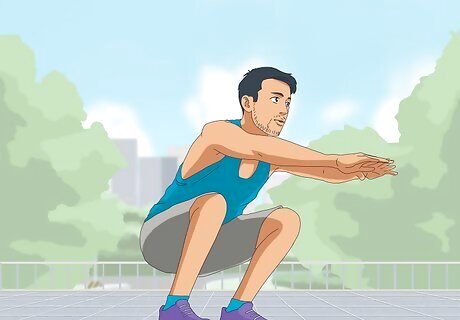
Alternate between speed training and plyometric and weight lifting exercises. After warming up, choose between speed training and plyometric and weight lifting exercises. Do speed training one day and plyometric exercises or weight lifting the next day. In addition to exercises that aim to improve your time, try doing plyometric (explosive) exercises and weight training, such as: Jumps Squats Burpees Bench press Lifts Leg curls

Take a rest day. Speed training takes a lot out of you. It is very important that you take a day to rest between practice sessions. If you try to train for speed while you are sore or fatigued, you will be unsuccessful and risk injuring yourself.
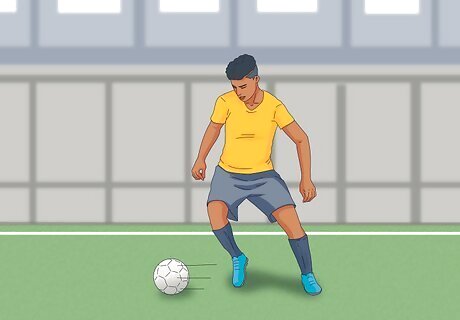
Focus on technique, then speed. It is no use building up speed when you are doing a technique or exercise wrong. Make sure that you have a fundamental knowledge of and good practice with soccer skills before attempting to increase your speed. Focus on doing things the right way, then on becoming faster at them.


















Comments
0 comment